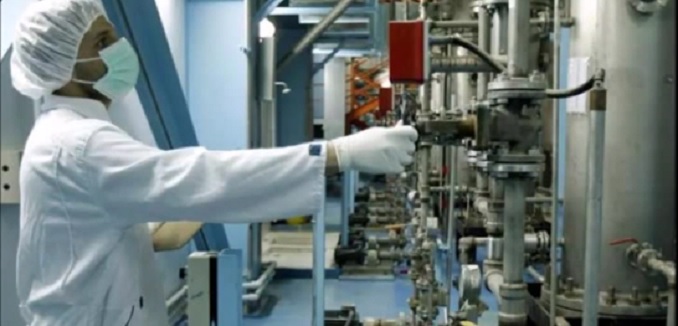Reuters on Monday conveyed statements from Iranian officials describing efforts by the regime to prepare a document that would comprehensively lay out the development of the country’s weapons program, a statement that the outlet read alongside long-standing and explicit demands from the West that Tehran must account for possible military dimensions (PMD) of its atomic program:
The move could meet Western demands for greater transparency to address concerns that Iran may have been trying to develop a nuclear weapons capability, but Behrouz Kamalvandi, spokesman for Iran’s atomic energy agency, made no mention of this.
“There are various files on our atomic programme, but we’re lacking a comprehensive document, which we are writing now,” the official IRNA news agency quoted Kamalvandi as saying.
Iranian diplomats had suggested in March that they might just wait until the very end of negotiations to address PMD-related issues, generating concerns that they intend to maneuver Western negotiators into a position where the Iranians would functionally dare the West to scuttle a mostly written deal over Iranian intransigence on those issues.
The West wants Iran to account for activities ranging from what are widely believed to have been tests related to the development of nuclear warheads – in 2011 the International Atomic Energy Agency (IAEA) accused Tehran of work at its Parchin military facility that provided “strong indicators of possible nuclear weapon development” – to Iranian military participation in the development of the country’s uranium stockpile.
Iran is obligated under United Nations Security Council (UNSC) resolution 1929 to address among other things possible military dimensions of Tehran’s nuclear program:
“Noting with serious concern that, as confirmed by the reports of 27 February 2006 (GOV/2006/15), 8 June 2006 (GOV/2006/38), 31 August 2006 (GOV/2006/53), 14 November 2006 (GOV/2006/64), 22 February 2007 (GOV/2007/8), 23 May 2007 (GOV/2007/122), 30 August 2007 (GOV/2007/48), 15 November 2007 (GOV/2007/58), 22 February 2008 (GOV/2008/4), 26 May 2008 (GOV/2008/115), 15 September 2008 (GOV/2008/38), 19 November 2008 (GOV/2008/59), 19 February 2009 (GOV/2009/8), 5 June 2009 (GOV/2009/35), 28 August 2009 (GOV/2009/55), 16 November 2009 (GOV/2009/74), 18 February 2010 (GOV/2010/10) and 31 May 2010 (GOV/2010/28) of the Director General of the International Atomic Energy Agency (IAEA), Iran has not established full and sustained suspension of all enrichment-related and reprocessing activities and heavy-water-related projects as set out in resolutions 1696 (2006), 1737 (2006), 1747 (2007) and 1803 (2008) nor resumed its cooperation with the IAEA under the Additional Protocol, nor cooperated with the IAEA in connection with the remaining issues of concern, which need to be clarified to exclude the possibility of military dimensions of Iran’s nuclear programme, nor taken the other steps required by the IAEA Board of Governors, nor complied with the provisions of Security Council resolutions 1696 (2006), 1737 (2006), 1747 (2007) and 1803 (2008) and which are essential to build confidence, and deploring Iran’s refusal to take these steps,
Non-compliance with the resolution has been cited in Congressional legislation as a central justification for imposing pressure on the Islamic regime.
A minor controversy occurred in late February when reports emerged that the IAEA had withheld a report documenting further PMDs for which Iran would have had to account. At stake are not just past activities, but the degree to which the Iranian military is tangled in – and must be untangled from – the Islamic republic’s ongoing nuclear work.
[Photo: MagnificentNewsNetwork /YouTube]




